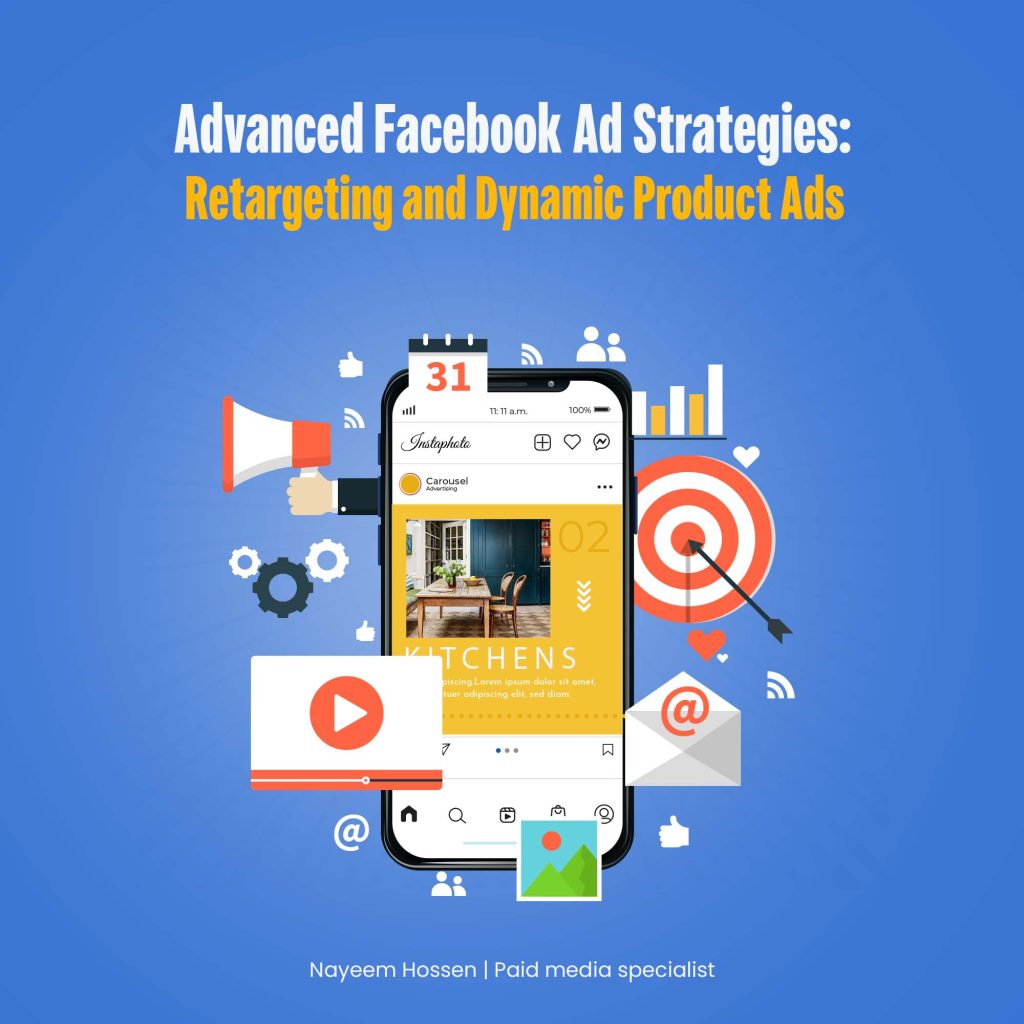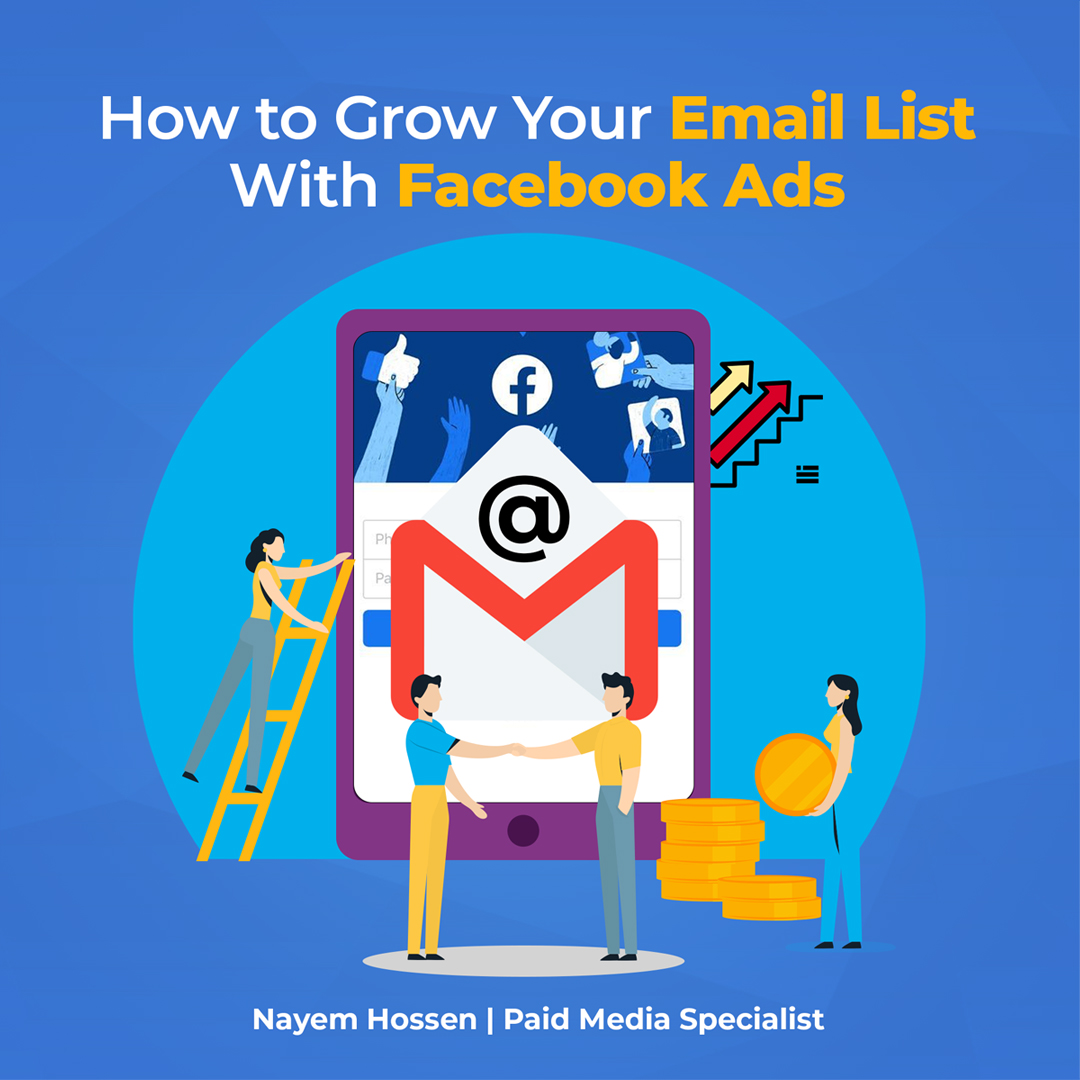In today’s digital world, using social media as a medium of advertisement has become a necessity. Among them, Facebook stands out as a powerhouse for advertising, offering a wide range of advanced targeting and engagement options.
As it serves as the most effective medium of digital marketing, also the most common one. To stand out with your campaign in this Facebook era, you need to step up your game and use the advanced strategies, “retargeting and dynamic product ads”.
To elevate your campaign to a new hight, lets delve into these techniques and explore how they can help you maximize your advertising efforts.
RETARGETING:
Retargeting, which is often referred to as remarketing, is a tactic that enables you to get in touch with users who have previously interacted with your website, app, or Facebook page. Based on the idea that consumers who have expressed interest in your brand are more likely to become loyal customers if they are reminded of your goods or services, this marketing technique was developed.
Installing the Facebook Pixel on your website is the first step in launching a fruitful retargeting campaign. You may target particular audiences based on their interactions by using the Facebook Pixel, a piece of code that monitors user behavior and actions on your website. Once the Pixel is set up, you can create custom audiences and tailor your ads accordingly.
As we already learnt about the pixel-based retargeting, it is time to hear more about another kind of retargeting strategy, which is list based retargeting. Retargeting marketing using lists is a potent tactic that enables companies to get in touch with potential clients who have previously expressed interest in their goods or services.
By leveraging customer data, such as email addresses or website cookies, marketers can create custom audiences and deliver personalized advertisements to these individuals across various digital channels. This targeted approach helps to increase brand visibility, engagement, and conversion rates.
List-based retargeting marketing enables businesses to maximize the value of their existing customer database, nurturing relationships and driving repeat purchases. By focusing on individuals who have already demonstrated interest, businesses can enhance their marketing efforts and achieve better results.
When designing your retargeting ads, remember to emphasize the unique selling points of your products or services. Use compelling visuals, engaging copy, and clear calls to action to entice users to revisit your website or complete their purchase. Additionally, consider offering incentives such as discounts or exclusive promotions to further incentivize conversions.
Dynamic product ads:
Dynamic Product Ads (DPAs) take retargeting a step further by automatically promoting relevant products to users based on their browsing history or past interactions. Instead of manually creating individual ads for each product, DPAs use product catalogues and user data to generate personalized recommendations in real-time.
Without having to generate hundreds of separate advertisements, Facebook’s dynamic advertising let you market your complete product catalog across Facebook, Instagram, and Audience Network automatically. Customers’ online and mobile intent signals are captured by dynamic advertisements to match the appropriate items with the right customers.
Here we will showcase 10 steps to set up dynamic product ads strategy:
1. Install the Facebook Pixel:
The Facebook Pixel is a piece of code that needs to be added to your website to track user behavior and actions. It enables the collection of valuable data, such as product views and purchases, which are essential for creating dynamic ads.
2. Create a Product Catalog:
A product catalog serves as the foundation for your dynamic ads. It contains detailed information about your products, including titles, descriptions, images, prices, and availability. You can manually upload the catalog or use the Facebook Business Manager to automate the process by integrating with your website or e-commerce platform. Every eCommerce platform has catalog integration options, and examples for Shopify and WooCommerce
3. Set Up Product Feed:
A product feed is a structured file that provides Facebook with real-time updates on your product inventory. It ensures that your ads are always up to date, reflecting the availability and pricing changes of your products. Configure the feed format and upload it to Facebook Business Manager.
4. Define Custom Audiences:
Custom Audiences allow you to target specific groups of people who are more likely to be interested in your products. Utilize the data collected from the Facebook Pixel, such as product views, add to cart actions, or previous purchases, to create custom audience segments.
5. Create Dynamic Ad Templates:
Design visually appealing ad templates that can be dynamically populated with product information from your catalog. Use Facebook’s ad creation tools or third-party platforms to customize the layout, format, and call-to-action buttons. Ensure that the templates align with your brand’s visual identity and messaging.
6.Set Up Dynamic Ads Campaigns:
Create dynamic ad campaigns within Facebook Ads Manager. Define your campaign objective, budget, targeting options, and ad placement preferences. Link the campaign to your product catalog and select the custom audience segments you want to target.
7. Advertise across Platforms:
Extend your dynamic ad campaigns beyond Facebook to reach a broader audience. Utilize platforms like Instagram and Audience Network to maximize your ad reach and engagement. Ensure that your ads are optimized for each platform’s specifications.
8. Monitor and Optimize:
Regularly monitor the performance of your dynamic ad campaigns Examine important data points including click-through rates, conversion rates, and return on ad spend (ROAS).Identify areas for improvement and make data-driven optimizations, such as adjusting bidding strategies, refining audience targeting, or updating ad creative.
9.A/B Testing:
Experiment with different variations of your dynamic ads to identify what resonates best with your target audience. Test different ad formats, images, headlines, or calls-to-action to optimize your campaign performance.
10.Retargeting:
Implement retargeting strategies to reach potential customers who have interacted with your products but haven’t made a purchase. Create custom audiences based on specific actions taken on your website and deliver tailored ads to re-engage them.
Here’s another aspect of DPAs we would like to discuss. Shopify enables businesses to run dynamic product ads on various advertising platforms. By integrating with platforms like Facebook, Shopify allows businesses to automatically create personalized ads that showcase relevant products to potential customers based on their browsing behavior and interests.
Remember to always stand out by applying advance Facebook ad strategy in your campaign. Combining retargeting and DPAs can create a powerful advertising synergy. Combining retargeting and dynamic product ads maximizes marketing effectiveness.
By retargeting users who have shown interest in a product or service and dynamically displaying relevant ads, businesses can increase conversion rates and deliver personalized experiences, resulting in higher engagement and sales.




